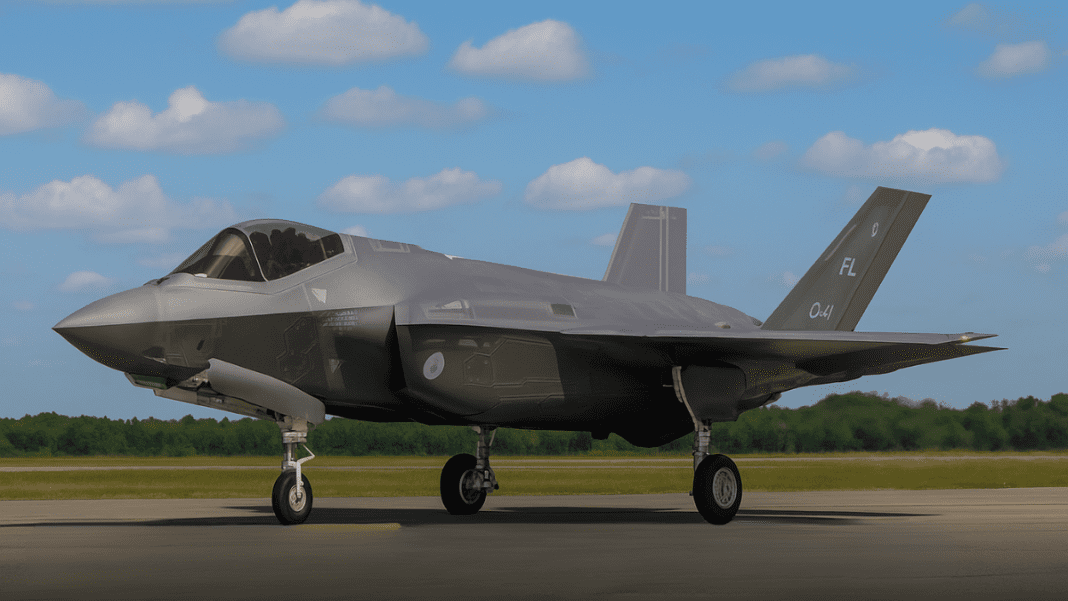Belgium has taken a major step to enhance its national defense by confirming the expansion of its air force with the purchase of 11 additional Lockheed Martin F-35 Lightning II fighter jets.
Strategic Expansion of Air Power Confirmed
The Council of Ministers is expected to officially approve the final decision. This move supports a larger plan to expand and modernize Belgium’s military forces in the coming years.
These new fighter jets feature advanced technology. They are stealth-capable, meaning they can avoid radar detection more easily than older planes. The F-35 jets are also fast, highly maneuverable, and equipped with modern weapons systems. Several NATO countries already use these jets and consider them among the most powerful aircraft available today.
Experts estimate the cost of acquiring these 11 fighter jets to be between €1 billion and €1.5 billion. This purchase is in addition to the aircraft that Belgium has already ordered, showing the government’s strong commitment to the expansion of its air defense capabilities.
Belgium Breaks Ranks — F-35s Fly to Italy, Not Texas
The announcement comes after the Belgian cabinet recently approved an updated national defense strategy. This updated plan outlines how Belgium will defend itself and work with international allies, especially through NATO. The timing is also important, as the decision comes just before a major NATO summit scheduled to take place in The Hague.
Defense Budget Sees Massive Increase
To support its growing defense goals, Belgium will significantly increase its military budget. The current budget of €10.8 billion will rise to €18.2 billion, with total planned defense spending reaching €139 billion over the next ten years. This is one of the largest defense investments in Belgium’s modern history.
The military is also set to grow in size. By the year 2035, Belgium aims to have 34,500 active soldiers. In addition to that, 8,500 civilians and 12,800 reservists will support the armed forces. This increase in manpower is part of a broader effort to prepare the country for modern threats and complex global situations.
Belgium’s Economy at Risk as US Considers Harsh Tariffs
The government will allocate €50 billion from the total defense budget for personnel-related expenses. This amount covers salaries, housing, working conditions, and social support for soldiers and staff. Officials stated that they are still discussing these matters with worker unions, but they have not reached any final agreements yet.
The government will use a portion of the defense budget to strengthen Belgium’s air defense systems. Officials are considering new equipment, including the Piorun system from Poland, the Norwegian NASAMS system, and potentially 20 Skyranger vehicles produced in Germany. These systems can detect and shoot down incoming threats such as enemy aircraft or missiles.
Focus on Expansion, Modernization and Cooperation
Belgium is also working closely with international allies as part of its broader defense strategy. Germany is emerging as a major leader in European defense, and Belgium is focusing on increasing cooperation by discussing shared training, joint missions, and equipment use as possible areas of partnership.
Beyond weapons and soldiers, the military is also looking at improving its internal infrastructure. The government is undertaking a major project to replace the country’s current military medical hub, which officials have described as outdated and insufficient. The new facility will provide better care and more modern equipment for soldiers.
To align with NATO standards, Belgium plans to maintain its defense spending at 2 per cent of its Gross Domestic Product (GDP) through 2033. This figure is expected to rise to 2.5 per cent in 2034. However, NATO’s most recent targets suggest that member countries may need to spend as much as 5 per cent of GDP by 2035, with 3.5 per cent going directly to military operations.
Bold Response to a Delayed Crisis: Belgium Sends F-16 Spare Parts to Keep Ukraine Flying
Belgium’s defense leaders have stated that many elements from the Cold War era will return, including higher levels of preparedness and quicker response capabilities. The current plans reflect a major shift in how the country views national and global security.
The purchase of the 11 additional F-35 fighter jets is a key piece of this larger puzzle. It marks Belgium’s serious effort to not only protect its own airspace but also to contribute actively to European and NATO-led defense missions.

